#Mammoplasty
Text

Hewwo,
This is me before surgery...
#art#artwork#my art#my artwork#artists on tumblr#psychedelic art#digital art#furry oc#sphynx oc#oc art#my ocs#oc#transgender#trans body#transmasc#trans#nonbinary#non binary#mastectomy#mastectomia#mammoplasty#mamoplastia masculinizadora#masculine mammoplasty#dr. adriano brasolin#adriano brasolin#brasolin#dr.brasolin#sphynx furry#sphynx
24 notes
·
View notes
Text
Medical4Tourist

Medical4Tourist slimming and beauty surgery clinic, plastic surgery including abdominal cosmetic surgery, lipomatics, rhinoplasty, abdominoplasty, breast implants, facial plastic surgery and mammoplasty, labiaplasty, buccal fat, face lift, sleeve, classic gastric bypass, mini bypass, surgery Lips and mouth, fat injection, Brazilian butt and hair transplant.
Visit Our Website
#Sleeve#gastric bypass#lipomatic#rhinoplasty#abdominoplasty#breast implant#face plastic surgery#mammoplasty#plastic surgery in iran
0 notes
Text
Laser therapy and application of Aloe vera for wound treatment after mastopexy complications: A case report by Emerson Barbosa da Silva in Journal of Clinical and Medical Images, Case Reports

Abstract
Mammoplasty is a surgery aimed at reducing breasts, being an invasive procedure and with the possibility of post-surgical complications. In the case presented, the patient had healing difficulties which progressed to an intense inflammatory process that evolved to necrosis of the areolas, laser therapy sessions were applied using lasers with red LED and blue LED in order to treat the inflammatory process, stimulate regeneration of tissue and collagen synthesis, treat the patient's pain, hydrate the tissues, fight infections and skin diseases and whiten the area. It was associated with the application of Aloe vera in natura to treat wounds and heal the local. It was observed that after treatment there was a significant improvement in areola necrosis, healing of the injured part and improvement in collagen production. Making an evaluation during the 24 sessions, we were able to assess that in synergy between the Red Laser, Infrared, Blue LED and the use of the active ingredient Aloe vera corroborate the evolution of tissue healing.
Keywords: Aloe vera; laser therapy; mastopexy; surgical complications.
Introduction
Mastopexy or reduction mammoplasty is a surgery performed to reduce the breasts are usually more invasive because it involves larger incisions, tissue, skin, fat and repositioning of the areolas. These patients have back and neck pain due to the weight of the breasts, in some cases, the clinical picture even presents curvature of the back, some patients seek this type of surgery because they are unhappy with their aesthetic appearance [1]. Necrosis occurs when cells in a particular region of the body fail to receive enough oxygen. There are risks that are managed by the patient and risks inherent to the surgery technique itself. There are more common factors after surgery, which are headaches and in the surgery itself, bleeding at the site, keloids, infection, necrosis and thrombosis. It is not common to happen necrosis in the breast after mammoplasty, the probability is around 1%, factors that interfere with healing are smoking and diabetes [2, 3]. In performing this type of surgery, it is necessary to raise the areola, due to a structure called the Areolocapillary Complex - CAP, it can suffer some injury, when this tissue does not receive oxygen causing necrosis [3, 4].
The doctor responsible for the surgery cannot observe if there is any type of injury in the NAC, this usually occurs in breasts with ptosis because the greater the distance that the areola will travel during the surgery, the greater the chances of any injury to the NAC. Several authors sought to describe studies that showed assessments regarding complications in breast reduction surgery. The most common complications found in the literature were described, related to blood perfusion of the nipple-areola complex (NAC), operative site infection, dehiscence, asymmetries and changes in sensitivity secondary to the surgical procedure. The type of injury that occurred was scarring below the right areola in the stitches and tissue necrosis in the left areola, the probable cause may have been because of the NAC injury. Each author in the literature as well as those present on the table describes the safety of each flap, with its particularities, but without comparing the different techniques with each other1. The treatment performed was Red, Infrared, Blue Led laser therapy and the Aloe and vera plant [4].
The laser performs an amplification of light by stimulated emission of electromagnetic radiation that emits coherent and collimated light that can have different powers, for therapeutic use, we use low power laser that increase lymphocytes and phagocytosis, increasing fibroblasts and intensifying reabsorption of fibrin and due to the characteristics Biostimulators accelerating tissue repair, due to mitotic activation of epithelial cells, produces collagen and decreases the synthesis of inflammatory meters.
Treatment Red and infrared laser therapy (light amplification by stimulated emission of radiation) Red Light (660nm): Red light treats inflammatory processes, stimulates tissue regeneration and collagen synthesis, improves vascularization and angiogenesis, increases ATP production. It acts on the epidermis, dermis, hypodermis, muscle fascia, muscle tissue, tendinous ligament [5]. Infrared Light (808nm): Infrared light has the analgesic function (pain treatment) as the main point, acts in lymphatic drainage and edema, has an anti-inflammatory effect and increases the absorption of products by 40 %. It acts on the epidermis, dermis, hypodermis, muscle fascia, muscle, ligament, tendon, nervous and bone tissue [6]. Blue Light (470nm): Blue light has bactericidal and fungicidal action, promotes tissue hydration, fights infections and skin diseases and has a whitening effect. It acts mainly on the epidermis and on open lesions in the dermis [5, 6]. The healing caused by the blue LED is a mechanism of molecular events divided into three phases: inflammatory, proliferative and remodeling. It is in the remodeling phase that the recovery of tissue structure occurs through maturation of elements and changes in the extracellular matrix, where the deposit of proteoglycans and collagen occurs.
Case Presentation
Patient 27 years old, female, denies smoking and alcohol consumption, denies diabetes mellitus, underwent mastopexy surgery to reduce and improve the sagging of the breasts, after performing the surgery below the right areola, she presented difficulty in healing in the stitches and in the left areola necrosis and difficulty healing the stitches. Patient underwent breast reduction surgery, after surgery the breasts present exudate thickening of the skin in the right areola in the stitches it began to show difficulty in healing, in the left areola that was not healing, there was a darkening of the areola and after two weeks the tissue it was already completely necrotic. The plastic surgeon who performed the surgery indicated the use of Kollagenase (collagenase) Cristália®, intended for the treatment of skin lesions when debridement is indicated in wounds, ulcers and necrotic lesions. Without evolution, the professional indicated Lasertherapy to the patient. The methodologies applied during the first 20 sessions were performed 3 sessions per week, red and infrared laser therapy doses of 8 J/cm2 and blue LED using the Laser Therapy EC - DMC® equipment. 24 laser therapy sessions were carried out, in all of them both blue and red led were used. The first 20 sessions were held 3 times a week, after which 4 sessions were held, one per week. The patient applied Aloe vera in natura 3 times a day on the lesion, before application, asepsis of the lesion was recommended.
The patient underwent anchor mastopexy with the desire to improve the aesthetic aspect of the breast, in addition to improving physical aspects such as pain in the spine, after a week of the surgical procedure the patient noticed that the left breast took longer to heal when compared to on the right. The lesion turned red and began to produce fluid, the shape of the areola was changing due to the intense inflammatory process. After a few days, a blackened stain began to appear, which characterized a necrosis process that soon extended, the incision became swollen and without the possibility of healing as seen in (Figure 1).

Figure 1: Left breast with extensive necrotic ulceration in the areola.
In the first consultation, skin debridement was performed, which aims to remove the largest amount of dead tissue, in order to reduce the process of tissue necrosis and reduce the possibility of infection by opportunistic pathogens, which would complicate the situation. The lesion was now cleaner (Figure 2) and it was possible to carry out an effective treatment plan.
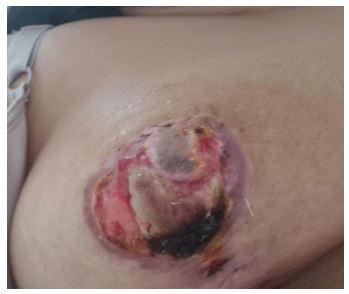
Figure 2: Left breast after debridement and cleaning of the lesion.
The application of Infrared and Blue LED was started, three times a week until completing the twenty sessions, during the treatment the patient performed the topical application of Aloe vera in natura to assist in the healing process in the skin and enhance the treatment. The lesions became redder, since the treatment increases tissue perfusion, improving nutrient delivery and access to defense cells that help in the healing process (Figure 3).
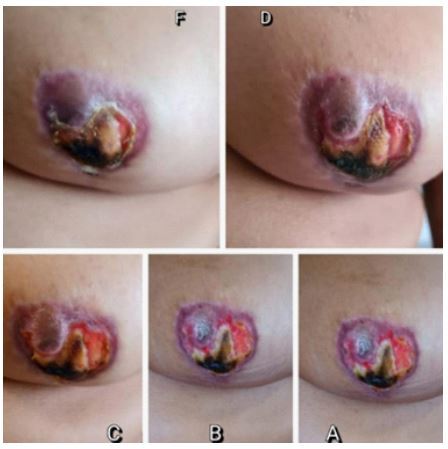
Figure 3, A-F: Evolution of the lesion between the first 5 sessions.
After the tenth session, the tissue improvement in relation to necrosis was already noticed and until the twentieth session, areas of necrosis in the breast were no longer seen, which showed the efficiency of the treatment (Figure 4).
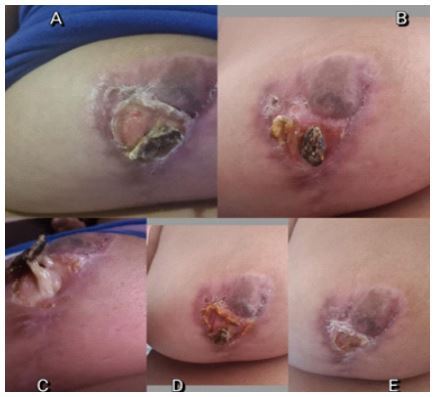
Figure 4, A-E: Aspect of the lesion from the tenth and twentieth sessions.
After the twenty-fourth session, the tissue has already been fully recovered and fibrosis at the site where the lesion was, showing the tissue completely healed, without bleeding and without production of fluids from the inflammatory process as seen in (Figures 5 and 6), leaving the optimistic patient and with improved self-esteem and non-psychological trauma suffered after the surgical complication.
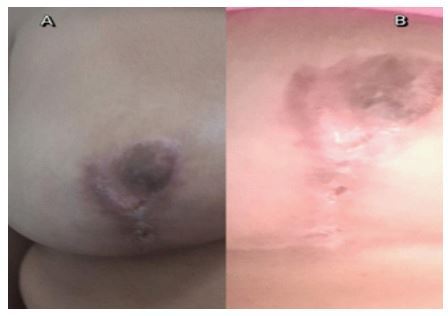
Figure 5, A-B: Result of the twenty-fourth session.

Figure 6: Aspect in the breast at the end of treatment.
Aloe vera, popularly known as aloe, is a medicinal plant that brings benefits to skin health. The hydrating action of the plant has already been proven in several studies. However, there is still not enough scientific evidence to confirm its healing effect [7]. Pyrocatechol, cinnamic acid, ascorbic acid and p-coumaric acid are some of the substances involved in the bactericidal (destroying bacteria) and bacteriostatic (preventing the proliferation of bacteria) effect of Aloe vera. The plant has antimicrobial action and fights some types of fungi, viruses and bacteria [7, 8, 9].
The use of Aloe vera can aid in healing and re-epithelization (repair of skin tissue) in a short period, if properly indicated, in case of burns [10]. Infrared density therapy has an anti-inflammatory effect, through vasodilation, it also has a beneficial effect on nerve cells, decreasing sensitivity and blocking the pain transmitted by these cells to the brain [9]. The laser penetrates deep into tissue and accelerates cell reproduction and growth. In this way, it increases the energy available to the cell so that it can absorb nutrients more quickly and get rid of waste products. As a result of laser exposure, damaged cells are repaired more quickly [10, 11].
Blue light laser therapy stimulates the development of fibroblasts in the damaged tissue. Fibroblasts are the building blocks of collagen, which is the essential protein needed to replace old tissue to repair tissue damage. Thus, the technique is effective in improving the aesthetic appearance of surgical scars and in the treatment of open wounds and burns, reducing the formation of fibrous tissue and keloids [12]. Thus, we noticed that the therapy associated with laser brings several benefits, mainly by accelerating the healing process of the skin, leading to the best appearance of the tissue and reducing the lesion, being in this situation the best treatment available for the conditions and access to the technologies that the patient can enjoy [13].
Conclusion
Although mammoplasty is a surgery aimed at improving not only the quality of life of the patient, also helps in self-esteem. Is important stress the necessary care during these procedures so that no negative side effect occurs, as in the case presented? When the patient goes through this situation, she has a worsening in her health and self-esteem, because there may be cases where recovery is not possible, affecting that person's life permanently. Fortunately, with the technologies we currently have, it is possible to perform treatments for help with the problem. It was observed that the synergistic treatments that were performed corroborate the improvement in the recovery of breast tissue.
Acknowledgments
The Sara Magna Clinic – Dermatologist and Naturopath, the Coordination of the Biomedicine and Pharmacy Course at the Centro Universitário Ítalo Brasileiro and the Centro Universitário FMABC.
For more details : https://jcmimagescasereports.org/author-guidelines/
#Mammoplasty#Aloe vera#laser therapy#mastopexy#surgical complications#Necrosis occurs#hypodermis#FMABC#Emerson Barbosa da Silva#JCMICR
0 notes
Text
a year ago today I woke up and didn't have giant* boobs anymore. best decision, no regrets, my back and shoulders are so grateful. wasn't a gender thing for me, but like. it also helped with that? even tho I didn't know it would? cuz I didn't know it was bothering me in that way? or did I idk anymore point is it was so beneficial pls let ppl chop off** their boobs
#*doctor's words#**mine weren't chopped off they're still here just much smaller#still count as big by society's standards but there's no comparison to before#even with some complications and all the weight bullshit i still have no regrets#there was more i wanted to say but i forgot#breast reduction surgery#reduction mammoplasty
14 notes
·
View notes
Text

Breast Reduction for Women remains one of the most requested plastic surgery procedures in the US, but there is more to Breast Reduction than meets the eye.
Large breasts can cause back and neck pain, and Reduction Mammoplasty can often provide relief. Breast Reduction not only improves the appearance of the breast by improving proportions, it makes many women feel better with physically and emotionally.
If you are wondering what Breast Reduction can do for you, read today's blog post and learn more.
https://www.sanfranciscoplasticsurgeryblog.com/what-can-breast-reduction-do-for-you
#plastic surgery#cosmetic surgery#plasticsurgeon#plasticsurgery#cirugiaplastica#cirujanoplastico#cosmeticsurgery#breast reduction#reduction mammoplasty
0 notes
Text
Attain your skincare resolutions with these top dermatologists in 2024
Reflecting on the year that was and thinking about what the future may hold, it is a good time for a fresh start—and even fresher face
Are you sick of making the same old resolutions every year? Reflecting on the year that was and thinking about what the future may hold, it is a good time for a fresh start—and even fresher face. That is why we have put together a list of top 10 dermats to look upto for your skincare & haircare needs.
1. Dr. Ameesha Mahajan, Cosmetic Dermatologist & Founder, Eden Skin Clinic
Under the expert guidance of Dr. Ameesha Mahajan, a luminary in the field, the clinic specializes in crafting personalized pre-wedding skincare experiences. Within their avant-garde facility, discover a realm of advanced treatments, from rejuvenating facials to lip enhancements and beauty infusions, ensuring a perpetual glow in your everyday life. Eden Skin Clinic seamlessly marries cutting-edge technologies with a bespoke touch, placing client satisfaction at its core. Regardless of age or gender, entrust Eden Skin Clinic for an unmatched skincare odyssey. Illuminate 2024 with confidence, guided by the top-tier dermatologists at Eden Skin Clinic.
#Breast Augmentation Surgery in Bangalore#Breast Enhancement in Bangalore#Breast Enlargement Surgery in Bangalore#Breast Implants in Bangalore#Mammoplasty in Bangalore#Breast Reduction Surgery in Bangalore#chemical peel for open pores in Bangalore#chemical peel for pigmentation in Bangalore#best chemical peel treatment in Bangalore#chemical peel for acne in Bangalore#chemical peel for dark circles in Bangalore#Fat Freezing in Bangalore#Facelift surgery in Bangalore#Facelift cosmetic Surgery in Bangalore#dermatologists in jp nagar in Bangalore#skin specialist in jp nagar in Bangalore#Electrolysis Hair Removal in Bangalore#Coolsculpting in Bangalore#body contouring treatment in Bangalore#Lipodissolve in Bangalore#belly fat reduction in Bangalore#Body Fat Removal in Bangalore#Liposuction in Bangalore#fat reduction in Bangalore#Glutathione Injection for Skin Whitening Treatment in Bangalore#glutathione injection cost in Bangalore#Skin Whitening Injection in Bangalore#best doctor for hair fall treatment in Bangalore#baldness treatment in Bangalore
0 notes
Text
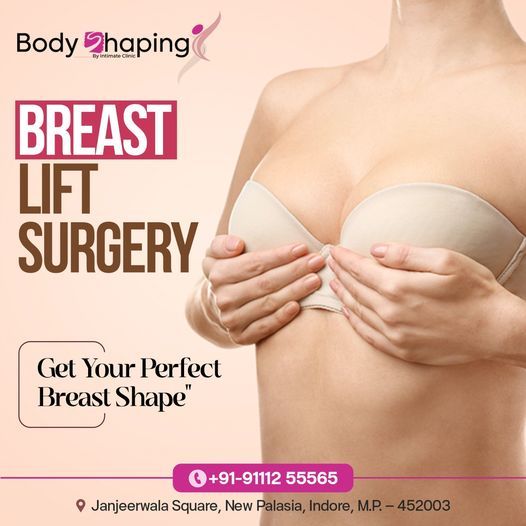
Breast Lift Surgery in Indore | Body Shaping Clinic in Indore
Transform and rejuvenate with Breast Lift Surgery in Indore. Our expert surgeons offer personalised solutions to enhance your confidence and restore youthful contours. Experience compassionate care and achieve your aesthetic goals with us.
#breast asymmetry surgery in indore#breast augmentation in indore#breast augmentation mammoplasty doctors in indore#breast augmentation mammoplasty in indore#breast enhancement care in indore#breast implant doctors in indore#breast lift surgery cost in indore#breast lift surgery in indore#breast minimal invasive reduction in indore#breast non surgical reduction in indore#breast reduction in indore#breast reduction surgery cost in indore#breast reduction surgery in indore#breast rejuvenation in indore#breast specialist doctors in indore
0 notes
Text

I took the bandages off!!!
I hurt like hell... I almost passed out
I'm so glad that my wife was here, helping me, taking my bandages off and being so patient, because I cried, I whined, I dozed off (because my blood pressure was gone).
But now I'm ok, the scarring looks great. Looks like I've been healing well, I'll post pics soon :)
The one holding me is my friend, the one who did the drawing. They're a hyaena
#adriano brasolin#dr. adriano brasolin#dr.brasolin#mastectomy#nonbinary#oc#trans#brasolin#mammoplasty#mamoplastia masculinizadora#mastectomia#masculine mammoplasty#sphynx furry#furry#fursona#furry art#furry fandom#furry oc
5 notes
·
View notes
Text
Revolutionizing Weight Loss: The Benefits of Sleeve Gastrectomy with Medical4Tourist
youtube
In the pursuit of a healthier and more fulfilling life, many individuals turn to weight loss procedures to address obesity and its associated health risks. Sleeve gastrectomy, commonly known as "sleeve," has emerged as a highly effective and popular weight loss surgery. For those seeking quality medical care coupled with a unique travel experience, Medical4Tourist is the go-to destination. In this article, we will explore the benefits of sleeve gastrectomy and how Medical4Tourist provides exceptional services for those considering this transformative procedure.
Understanding Sleeve Gastrectomy:
Sleeve gastrectomy is a minimally invasive surgical procedure designed to help individuals lose excess weight by reducing the size of the stomach. During the surgery, a large portion of the stomach is removed, leaving a smaller, sleeve-shaped stomach. This results in a significant reduction in the amount of food the stomach can hold, leading to weight loss through restricted food intake.
Benefits of Sleeve Gastrectomy:
Effective Weight Loss:
Sleeve gastrectomy has proven to be highly effective in promoting weight loss. Patients often experience a substantial reduction in excess body weight within the first year after surgery. The procedure not only aids in shedding pounds but also contributes to long-term weight management.
Improvement in Obesity-Related Conditions:
Beyond weight loss, sleeve gastrectomy can lead to improvements in various obesity-related health conditions. Patients often observe positive changes in conditions such as type 2 diabetes, high blood pressure, and sleep apnea. This makes sleeve gastrectomy a holistic approach to overall health improvement.
Reduced Hunger:
One of the unique advantages of sleeve gastrectomy is its impact on hunger hormones. The surgery alters the hormonal balance in the body, reducing the production of ghrelin, a hormone associated with hunger. As a result, patients experience reduced feelings of hunger, aiding in better control of food intake.
Medical4Tourist - Your Gateway to Quality Healthcare and a Unique Experience:
Medical4Tourist stands out as a leading medical tourism provider, offering a seamless blend of top-notch medical services and a travel experience like no other. Here's how Medical4Tourist caters to individuals considering sleeve gastrectomy:
Internationally Accredited Facilities:
Medical4Tourist partners with globally recognized hospitals and medical facilities that adhere to the highest international standards. Patients can rest assured that they will receive top-tier medical care from experienced and qualified professionals.
Personalized Treatment Plans:
Understanding that each patient is unique, Medical4Tourist provides personalized treatment plans tailored to individual needs. The journey begins with a comprehensive consultation to assess the patient's health status, ensuring a customized approach to sleeve gastrectomy.
Affordable Packages:
Medical4Tourist is committed to making quality healthcare accessible. The business offers affordable packages that encompass the entire medical journey, including pre-operative consultations, the surgical procedure, post-operative care, and even accommodation and transportation.
Guided Tours and Cultural Experiences:
Recognizing that medical travel extends beyond the hospital walls, Medical4Tourist goes the extra mile by offering guided tours and cultural experiences. Patients can immerse themselves in the rich cultural tapestry of the destination, making their journey not just about medical treatment but also about exploration and discovery.
Conclusion:
Embarking on a weight loss journey through sleeve gastrectomy can be a life-changing decision, and choosing the right destination for the procedure is crucial. Medical4Tourist combines excellence in healthcare with a unique travel experience, making it the ideal choice for individuals seeking sleeve gastrectomy. With the benefits of effective weight loss, improved health, and reduced hunger, coupled with the convenience and affordability offered by Medical4Tourist, individuals can confidently take the first step toward a healthier and happier future.
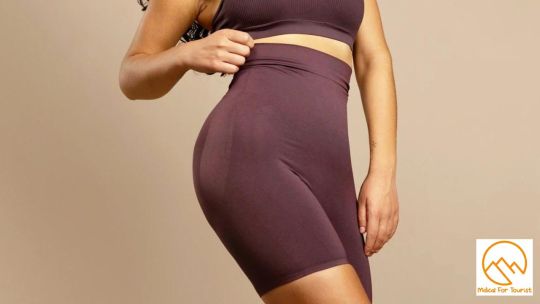
#Sleeve#gastric bypass#lipomatic#rhinoplasty#abdominoplasty#breast implant#face plastic surgery#mammoplasty#plastic surgery in iran#Youtube
0 notes
Text
Breast reduction in Dubai is a popular aesthetic plastic surgery. Breast reduction surgery is performed to make oversized breasts appropriately smaller. It is also called “mammoplasty” in which the plastic surgeon removes excess breast fat, glandular tissue, and excess skin to look proportionate to the rest of the body. If you are seeking mammaplasty surgery, visit one of the best breast reduction clinics in Dubai, MPSI.
0 notes
Link
It is generally observed that females with very large breast suffer great deal of uneasiness. It is embarrassing for any female when the overly large breasts become a prominent noticeable thing. It limits the activities and clothing choices as well. In addition there are problems like chronic neck and shoulder pain, skin irritation and rash due to rubbing of skin.
#Dr. Sachin Rajpal#Plastic surgeon in delhi#Cosmetic surgeon in delhi#delhiplasticsurgery#Breast Reduction in Delhi#Reduction Mammoplasty
0 notes
Text
hey-o, last week i had a reduction mammoplasty (recovering well); best decision, worth all the hassle; if you're thinking about it please consider this your sign to do it
1 note
·
View note
Note
Hi there! I have a quibble that I hope comes across as good faith and not anon hate: you quote statistics from the 2015 Transgender Study in a way that I think decontextualizes them. For example, trans men are more likely to be denied coverage for surgery (but not top surgery, which is considered cosmetic for trans women. Also, FFS was not included in the study and is almost never covered). Trans men face more harassment from police but trans women are more likely to be incarcerated, etc.
The point of the post (which is here) was just to debunk the myth that trans women are categorically "more oppressed" across the board. The stats I pulled were just a number of (fairly random) examples to that end, and I clarify in the text of that post, in reblogs, and in subsequent posts that the point is not to create a definitive list of The Ways Transmascs Are Most Oppressed- it's to demonstrate that the common assumption that trans women always have the highest rates of violence/discrimination in all areas is, y'know, patently not true.
All of those statistics represent only a narrow slice of a much more complicated issue.
To use your first example, "trans men are more likely to be denied coverage for surgery (but not top surgery, which is considered cosmetic for trans women. Also, FFS was not included in the study and is almost never covered"...
From the 2015 USTS Report:
"Transgender men (57%) were more likely to be denied surgery coverage than transgender women (54%) and non-binary people, including non-binary people with female on their original birth certificate (49%) and non-binary people with male on their original birth certificate (35%)" (p.95)
To my knowledge, the USTS did not actually outline surgery coverage rates for specific surgeries. But they do talk about the rates at which different people want, or have had, specific surgeries:

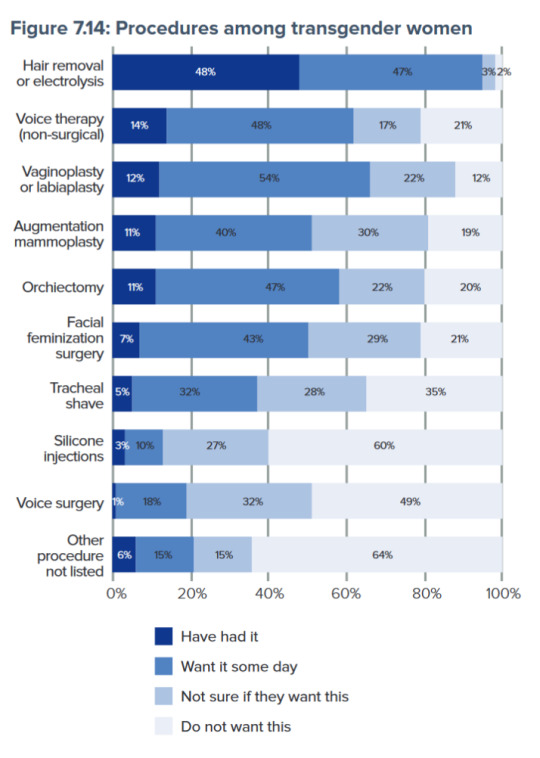
So, right off the bat: you can see FFS (Facial Feminization Surgery) reported in Figure 7.14. But what strikes me more about these charts in this discussion is that it really does speak to a more complicated issue on the whole.
You could absolutely say trans men (26%) have top surgery more than trans women (11%), but that would also be misleading. 97% of trans men have had or want to have chest reconstruction or reduction, compared to 51% of trans women who have had or want augmentation mammoplasty... well, yeah, it makes a bit of sense that trans men have had this kind of surgery more. They want it more.
But for kicks, let's look at the "have had" vs. "want someday" ratios, for a better picture of what those denial rates might be: 37% of trans men who wanted top surgery (97%) have actually had it, vs. 27% of trans women who wanted it (51%). We don't know that "denied coverage" is the reason all of these people have not gotten it yet, but it's probably a factor; and yes, that does indicate a 10% gap with trans men ahead.
And for kicks, let's apply that same concept to a few other procedures. To use your other example, 14% of trans women who want FFS have had it. But that's also not a super popular surgery for trans women; electrolysis/laser hair removal is the most popular, and 50% who want it have actually had it. In comparison to the most popular surgery for trans men- top surgery; 37% who want it have had it- that's a 13% gap with trans women ahead.
Granted, electrolysis is generally less invasive and more accessible (though it also requires repeated appointments), but I also couldn't tell you how often it's covered by insurance.
You might also compare bottom surgery rates: 66% of trans women want or have had vaginoplasty, vs. 27% of trans men want metoidioplasty (meta), or 22% want phalloplasty (phallo). Of trans women who want it, 18% have had it. Of trans men who want it, 7% (meta) or 15% (phallo) have actually had it. That's a gap of 3% or 11%, with trans women ahead in both cases.
You may also note that for trans women, surgical procedures are not super popular; vaginoplasty is the most sought-after surgery, and it's also third on the overall list of procedures for trans women. Trans men do not have non-surgical transition procedures listed (or generally available, afaik). Which is, imo, important context for another relevant statistic: "Transgender men (42%) were more likely to have had any kind of surgery than transgender women (28%)".
My point is, again, just to say that this stuff is complicated. I grabbed those statistics because they were a quick way to demonstrate the more general point that this is not a black-and-white issue, that trans men do not oppress trans women (and vice versa!), and that trans men are not actually More Privileged In All Areas.
And like, yeah, when you look closer at the issues those statistics reference, there are more layers- that's the point! It's a 300 page document, you could have a lot of conversations around all of these numbers and what they mean.
The fact that I didn't have all of those conversations in that post was not an attempt to hide these complexities. It was a request that we start to engage in them, especially without gearing it toward the question "who has it worse?", when the actual questions we need to be answering are "why does that happen?", and "how do we solve it?"
What I wonder, also, is- what is your point in bringing this up? The examples you brought up were lacking context, and in one case fully untrue. I want to assume good faith as well, but your ask comes off as if you're trying to argue that transmascs never actually struggle in a comparable or unique way.
244 notes
·
View notes
Text



HAPPY PRIDE MONTH!!!
Images: Left: a painting of a human figure with breasts and long hair, running over a green field against a blue sky, with a white circle that is ambiguously the sun or the moon in one corner. Above it are the words "My Body, My Choice."
Middle: Pre-surgery photo of me wearing a t-shirt with the above art, the large curve of my chest cutting off parts of the runner and field. My hands are on my hips.
Right: Post-surgery photo of me wearing the same t-shirt, the design now fully visible on my flat chest. I have one hand on my hip and the other up making a peace sign. /end ID.
My mom wore this shirt to protest for abortion rights in the 1980's. I told myself once that some day, I'd march in Pride wearing it over a binder. A lot of things in life meant that didn't happen, including my asthma making binding difficult, and large gatherings unsafe for me in the pandemic.
Thanks to my state's protections for gender affirming care though, and the state health insurances established by the healthcare reforms passed under President Obama, I was finally able to get mammoplasty to remove the weight I've been carrying on my chest for over half my life.
I'm grateful to all who've come before that made this possible. The fight for reproductive rights and the fight for gender affirming care cannot be separated; it's all bodily autonomy.
This is my body. This is my choice.
Happy Pride.
#Something To Get Off My Chest Quest#bodily autonomy#nonbinary#queer tag#Pride Month#Queer Joy#misc Min tag#srs blogger selfies#yes I included which president the healthcare act was passed under#because I find it very very funny that I can completely accurately#look down at my flat chest and say 'thanks Obama'#lots of other people got us here! but they are not a meme#we're here we're queer and we'll keep being here whether you get used to it or not
13 notes
·
View notes
Text
Home remedy for hair growth: Mix castor oil with coconut oil
Hair loss is a common problem, and if you are looking for a home remedy, try some of the best oils for hair growth. Mix castor oil with coconut oil for hair growth.
Hair loss is one problem that I have been dealing with since my early 30s. Many people suggested home remedies for hair growth. Some said using castor oil can help to grow my hair faster as it is known for its nourishing and moisturising properties. My mom told me to mix castor oil with coconut oil for hair growth! When I applied this mixture to my dry hair, I noticed lesser hair strands on my floor. It helped me to control hair loss to some extent. Read on to find out what an expert has to say about using castor oil with coconut oil for hair growth.
What are the benefits of castor oil for hair?
You get castor oil from the seeds of a plant called Ricinus communis. The oil is filtered and steamed to remove ricin, which is a toxic component, says dermatologist Dr Sneha Krishnoji Rao.
Castor oil is good for moisturising hair. The fatty acids in castor oil provide nourishment to hair follicles. The oil also protects the scalp and hair shaft from fungal and microbial infections, as well as promote hair growth.
#Breast Augmentation Surgery in Chennai#Breast Enhancement in Chennai#Breast Enlargement Surgery in Chennai#Breast Implants in Chennai#Mammoplasty in Chennai#Breast Reduction Surgery in Chennai#chemical peel for open pores in Chennai#chemical peel for pigmentation in Chennai#best chemical peel treatment in Chennai#chemical peel for acne in Chennai#chemical peel for dark circles in Chennai#Fat Freezing in Chennai in Chennai#Facelift surgery in Chennai#Facelift cosmetic Surgery in Chennai#dermatologists in jp nagar in Chennai#skin specialist in jp nagar in Chennai#Electrolysis Hair Removal in Chennai
0 notes
Text
So... I'm alive!
Everything went well, but I'm in pain and a lot of meds
So for now I'm unable to draw, that's why u will notice a shift in the art style.
This drawing of myself, and the next ones were/will be made by a friend of mine that doesn't have a tumblr account yet (I'll tag them when they make an account)
I just wanted to say that, I was scared of regretting this decision and/or something going wrong, but my body finally makes sense and I've never been happier with it.
See u soon~

#adriano brasolin#dr. adriano brasolin#dr.brasolin#mastectomy#nonbinary#trans#oc#brasolin#mammoplasty#mamoplastia masculinizadora#mastectomia#masculine mammoplasty#sphynx furry#furry#furry oc#furry art
4 notes
·
View notes